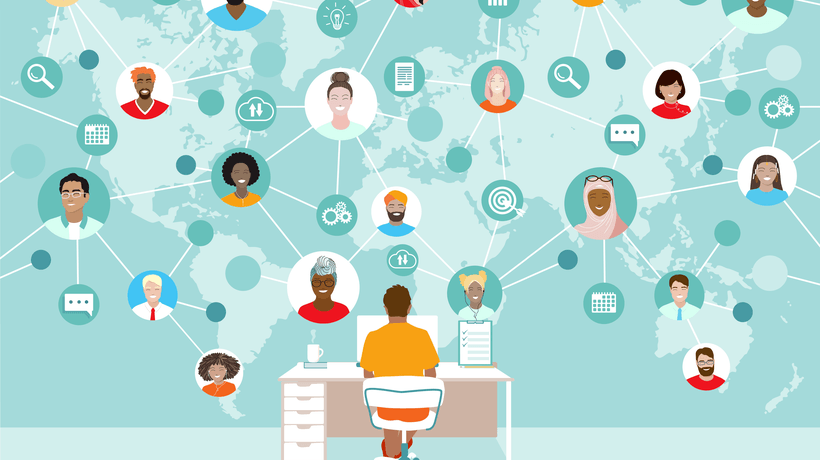Why Digital Accessibility Is Important For Hybrid And Remote Offices
Digital accessibility doesn't only refer to those with visual, auditory, speech, physical, cognitive, or neurological disabilities. It also refers to people who face age limitations or health conditions and need special assistance. Accessible solutions are needed even when someone is dealing with a slow internet connection or when an employee injures their dominant hand. Corporations must offer options that help everyone access important information, promoting diversity and inclusion. These options shouldn't only be accessible but also usable, meaning that extra attention must be paid to effectiveness and efficiency. Therefore, digital accessibility for hybrid and remote workplaces is essential if companies want to thrive in the new era of corporate function.
Factors Companies Should Consider
Over 61 million people in the United States have some sort of disability, and 19.1% of them were employed in 2021. Some people are born disabled, but impairments can also appear later in life and may be temporary or situational. While it may be easier to notice a physical disability, not all of them are visible. Brain injuries, depression, autism, bipolar disorder, and chronic pain are forms of disability that may make it hard for people to find and retain jobs. As a result, when companies craft their digital accessibility plan for hybrid and remote workplaces, they need to be very detailed in their approach. For example, some people are easily triggered by visuals and suffer from migraines and seizures. Organizations should research and find ways to avoid such effects. Collaborating with accessibility services will help them conduct audits to identify barriers that employees face daily.
6 Solutions To Digital Accessibility For Hybrid And Remote Teams
1. Utilizing Universal Design
The goal of universal design (UD) is to accommodate people regardless of their abilities and offer them access to information and actions that everyone else enjoys, with a focus on global access. This way, companies don't have to adapt or specialize their amenities and therefore spend extra resources. HR professionals should be aware of UD and refer to its principles when creating internal communication manuals and handbooks. For example, they should use simple and easy-to-understand language so people with cognitive disabilities understand it.
2. Adopting Inclusive Language
Any discriminatory behavior against people with physical, emotional, and mental disabilities is considered ableism. It can be externalized through microaggressions, unconscious bias, and systemic oppression. People with disabilities shouldn't be perceived any differently than non-disabled individuals. Building awareness about the appropriate language regarding people with disabilities should be any organization's priority. Inappropriate language can insult people and make them feel excluded from their workplace's core functions. Inclusive language ensures their inclusion and helps them enjoy their basic human rights. For example, instead of labeling someone "blind," it's better to refer to them as "a person with blindness." Adopting this language on a company's digital platforms makes people with disabilities feel included and that they can ask for help whenever they need it.
3. Using Assistive Devices
To offer digital accessibility to hybrid and remote workplaces, HR professionals should be aware of a company's employees with disabilities. Knowing the necessary assistive devices for each case is essential, too. For example, screen readers should be provided to people with visual impairments. Also, a company's software must contain a screen magnification tool so users can control text size. Text readers are another assistive device used by people with learning difficulties and eye fatigue. This tool reads text in a synthesized voice and helps people understand the material efficiently. Additionally, speech input software allows users to give verbal directions to their computers and even verbally control the mouse. Other devices include head pointers, motion tracking, single-switch entry devices, and vertical monitors. For instance, someone who suffers from vestibular dysfunction is triggered by on-screen movement, so they might require a vertical monitor to reduce scrolling.
4. Running Accessibility Surveys
Employees are not required to mention any disabilities they have, but HR professionals must assure them that doing so will help the company offer the appropriate assistance. They should also feel secure that no one other than HR team members will know about this sensitive information. The whole procedure can be carried out through accessibility surveys, where employees will offer feedback. They will mention the technical difficulties they might face daily and the accommodations they would expect to receive from the company. As a result, people with disabilities will feel valued in their workplace.
5. Training Employees
After a company gathers its team members' accessibility needs, it must identify any existing barriers and build training courses. Online courses are self-paced, which means participants can take their time to complete them. Webinars, workshops, and coaching are a few other options for a company to train their hybrid and remote workplaces on digital accessibility. During training, employees should learn about the different types of disabilities, the various assistive devices, the Web Content Accessibility Guidelines (WCAG), and common issues people with disabilities face. Furthermore, the training material must be relevant to the workforce's tasks and responsibilities, and every employee should be encouraged to take action and support colleagues with disabilities when they can.
6. Making Individual Accommodations
Accessibility is proactive, meaning that companies are prepared for all the possible barriers a person with disabilities might face. On the other hand, accommodations are reactive: someone needs to encounter a problem and then be offered a solution. While being proactive is the goal, making individual accommodations when the need arises is important. For example, someone with a visual impairment may not feel comfortable having their camera on during team meetings. However, if a person with hearing loss joins, they might decide to turn their camera on to assist their colleague in understanding them through lip reading or gestures.
Conclusion
Organizations should focus on offering digital accessibility to their hybrid and remote workplaces to be inclusive. As the years go by, more countries are passing laws and regulations regarding people with disabilities accessing online material. Being proactive in this area means that companies can equally address everyone, regardless of their abilities or special training needs.








